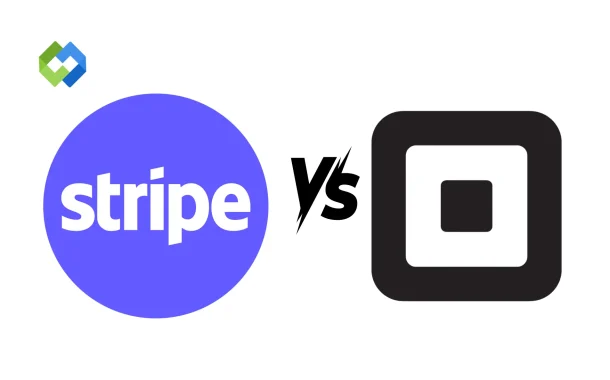Table of Contents
Table of Contents
Ease of Use for Online Store Owners
User Interface and Setup Process
Stripe has a clean and developer-friendly interface. It’s made for those who want full control and are comfortable with some technical setup. You can customize almost everything, but you may need help from a developer. Square, on the other hand, is more beginner-friendly. It’s easier to set up without technical knowledge, and most tools work right out of the box.
Dashboard and Navigation Experience
Stripe’s dashboard is powerful but may feel complex at first. It gives deep control over payments, reports, and settings. It’s great for advanced users. Square’s dashboard is simple and clear. Everything is easy to find, and it’s built for small business owners who want fast access to tools without learning curves. For most online store owners, Square feels more straightforward to use from day one.
Payment Features and Supported Methods
Supported Payment Types
Stripe supports a wide range of payment methods. This includes credit and debit cards, digital wallets like Apple Pay and Google Pay, bank transfers, ACH, and even buy-now-pay-later options like Klarna and Afterpay. Stripe also works well for international payments and accepts over 135 currencies. Square covers basic payment types like cards and wallets, but it is more focused on U.S.-based transactions. Its international payment support is more limited compared to Stripe.
Recurring Billing and Subscriptions
Stripe offers strong tools for subscriptions and recurring billing. You can set up automatic renewals, offer different pricing tiers, and customize billing cycles. These features are ideal for businesses offering memberships or SaaS products. Square does offer recurring payments, but the features are more limited and not as flexible or developer-friendly.
International Payments
Stripe is better suited for global businesses. It supports multiple currencies, local payment methods, and automatic currency conversion. Square mainly focuses on local markets, especially the U.S., Canada, and a few others. For stores selling internationally, Stripe is often the better choice.
Integration with E-commerce Platforms
Popular Platforms Supported
Stripe integrates smoothly with many major e-commerce platforms like WooCommerce, Shopify, BigCommerce, Wix, and Magento. It also works well with custom-built websites using APIs. Stripe has strong developer tools that make it easy to create advanced setups. Square also supports platforms like WooCommerce and BigCommerce, but its integrations are fewer and less customizable. It works best with the Square Online Store or Square’s native tools.
Plugins and Developer Tools
Stripe is built for flexibility. It offers powerful APIs, detailed documentation, and advanced features for developers. You can fully customize checkout experiences and workflows. Many plugins are available for WordPress and other CMS platforms. Square has a simpler setup with pre-built plugins, but it’s not as flexible. It’s ideal for those who want fast setup without needing to code. If you want custom solutions, Stripe gives more control.
Transaction Fees and Pricing Comparison
Stripe Pricing Structure
Stripe charges a flat rate of 2.9% + 30¢ per transaction for online payments in the U.S. There are additional fees for currency conversion, international cards, and advanced features like invoicing or Stripe Radar. Subscriptions and recurring payments also follow the same base fee, but some tools may add extra costs. Stripe does not charge setup or monthly fees unless you use premium services.
Square Pricing Structure
Square also charges 2.9% + 30¢ per online transaction, similar to Stripe. However, Square offers all-in-one packages for online stores, especially if you’re using its own Square Online platform. Square doesn’t charge monthly fees for its basic online store builder, which is helpful for small businesses. For in-person sales, Square charges a lower fee of 2.6% + 10¢ per swipe.
Hidden Fees or Add-ons
Stripe’s add-on tools may increase your overall costs if you enable advanced fraud protection, tax calculation, or invoicing. Square includes many features at no extra cost, but some customizations or integrations may require paid plans. Both platforms are transparent, but Stripe may require more careful planning to manage total expenses if using premium tools.
Mobile and In-Person Payment Options
Stripe Terminal Overview
Stripe offers Stripe Terminal for in-person payments. It allows you to accept card payments using card readers that connect to your app or system. It’s built more for developers and businesses that want to build their own custom checkout solutions. You’ll need to manage hardware and software setup yourself or hire a developer. It’s flexible but not the quickest option to launch.
Square POS Features
Square is widely known for its point-of-sale (POS) system. It offers free POS software and a variety of card readers, including contactless and chip readers. Square’s mobile app turns your phone or tablet into a payment device. It’s ideal for small stores, food vendors, or anyone selling in person. Setup is fast and easy, and all tools are designed to work right out of the box. For in-person sales, Square is often the better choice due to its simplicity and built-in hardware support.
Which Is Better for Your Online Store
If your online store is focused only on digital sales, Stripe is usually the better choice. It supports a wide range of payment methods, has strong tools for subscriptions, and offers better global support. It’s also ideal if you need custom payment flows or plan to scale internationally. Stripe works well with popular e-commerce platforms and has powerful developer tools for custom setups.
On the other hand, if you sell both online and in-person or need a simpler setup, Square may be more practical. It’s great for beginners, with built-in tools and a user-friendly dashboard. Square is also ideal if you’re using its all-in-one store builder or running a local shop. Your decision depends on your store’s needs, whether you’re going global or staying local, and how much control you want over your checkout and payment systems.
Conclusion
Stripe and Square both help you accept payments online. Stripe is good if you want more control, support for global payments, and advanced features. It works well with big online stores and offers many tools for developers. If your store is growing or you sell worldwide, Stripe is a strong option.
Square is easier for beginners. It’s best for small stores or sellers who also take payments in person. The setup is simple and quick. If you want something that works out of the box without extra effort, Square is a great choice. Pick the one that fits your store’s needs.














